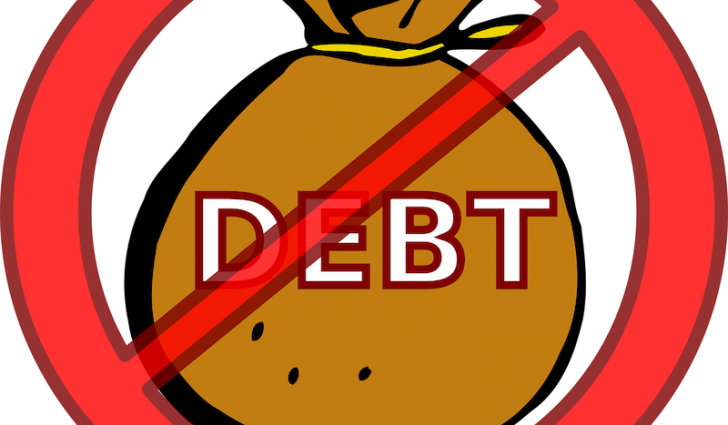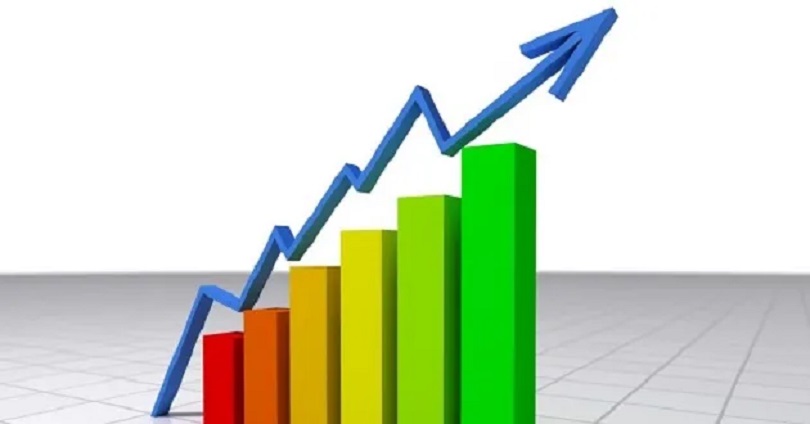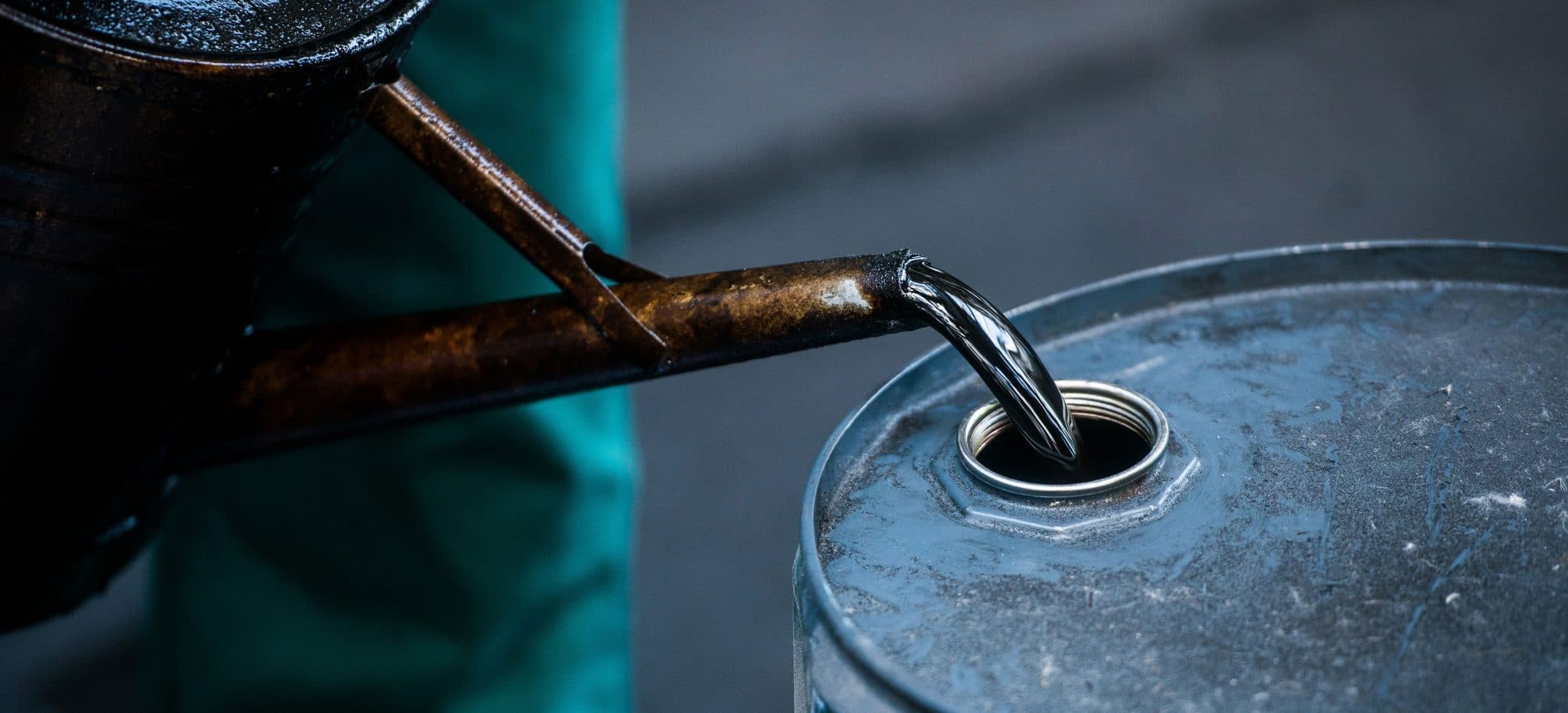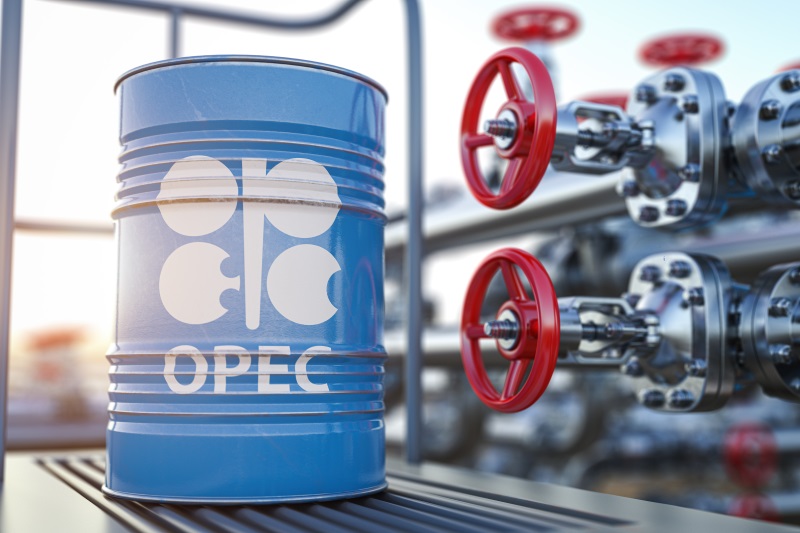Economy
S&P Says Nigeria’s External Debt Moderate, Affirms Ratings

By Dipo Olowookere
Despite some local key stakeholders in the Nigerian economy raising alarm on the rate of the countrys foreign debts, a renowned global rating agency, Standard and Poors (S&P Global Ratings), has said there is no cause for alarm.
In a statement issued last Friday, S&P said though Nigeria’s economic performance remains weak, its external debt is moderate.
However, the agency said fiscal consolidation would be key in the period ahead as President Muhammadu Buhari remains in office for another four year, noting that this should give him administration another opportunity to strengthen economic policy framework and consolidate public finances.
Consequently, S&P announced that it is affirming its ‘B/B’ sovereign credit ratings and ‘ngA/ngA-1’ Nigeria national scale ratings on Nigeria, with a stable outlook. It also affirmed the long- and short-term Nigeria national scale ratings at ‘ngA/ngA-1’.
It was stressed that the stable outlook balances the risks associated with Nigeria’s still-weak economy against its moderate external debt and external buffers.
However, S&P said it may lower the ratings if Nigeria’s international reserves decline markedly, with the external debt rising much faster than currently expected.
“The ratings remain constrained, in our view, by the country’s low economic wealth, weak institutional capacity, and lower real GDP per capita trend growth rates than peers at similar development levels,” the statement obtained by Business Post said.
The rating firm said the Africa’s largest economy is growing more slowly than that of peers that have similar wealth levels, with a relative political stability, having experienced uninterrupted democratic transitions.
“However, we regard its institutions as weak and policy predictability as low. Fiscal budgets are frequently passed well after the year has begun, which impedes the government’s responsiveness to economic challenges,” it noted.
S&P pointed out the inability of the largely centralized federal government to redistribute wealth and spread power, to some extent, raising concerns on the security risks from Boko Haram in the northeast and the sporadic attacks on oil pipelines in the Niger Delta region of the country.
The rating agency noted that GDP per capita has been negative and debt-servicing costs absorb at least 30 percent of the country’s fiscal revenues, which constrains its fiscal flexibility.
Nigeria is a sizable producer of hydrocarbons. The oil sector’s direct share of nominal GDP is officially estimated at about 10%, but oil and gas account for over 90% of exports and at least half of fiscal revenues.
Economic data released by Nigeria’s National Bureau of Statistics show that Nigeria’s economy grew by 1.9% during 2018, based on improving performance in non-oil sectors as well as rising oil prices.
Agriculture, manufacturing, and services (which comprise the transport, information, communication, and technology sectors) have helped the economy grow faster in 2018 than the 1% it achieved in 2017.
“In our view, the increase in the availability of foreign currency and the flexible exchange rate have helped the non-oil sector grow.
“That said, average oil production is close to 2 million barrels per day and we forecast that oil prices will decline over 2019 and 2020.
“Low oil prices are likely to present fiscal pressures and limit growth, stimulating government expenditure.
“In the medium term, we expect improvements in the non-oil sector to support our forecast of economic growth rising to at least 2% in real terms.
“However, when we use 10-year weighted-average growth rates to estimate real per capita GDP growth, we calculate that the real economy is shrinking by 0.7% a year, well below the economic performance of peers that have similar wealth levels,” the statement said.
It was further disclosed that the nation’s net external debt is likely to increase over 2019-2022 if fiscal financing remains externally funded and external buffers stay at current levels, saying that after the elections, Nigeria could consolidate its fiscal position if it increases non-oil revenues while moderating capital spending.
Although oil revenues support the economy when prices are high, they expose Nigeria to significant volatility in terms of trade and government revenues.
Consequently, Nigeria’s trade balance is significantly affected by changes in the price of oil. Nigeria also consistently runs substantial deficits on the service and income balances, the rating company stated.
It stressed that the most consistently supportive feature of Nigeria’s current account is the surplus on net transfers, largely based on diaspora remittances by Nigerians living abroad.
In 2018, oil prices increased by close to 30%, boosting Nigeria’s export revenues. However, imports of goods and services surged at the same time.
“We estimate that the current account surplus in 2018 may be only 2% of GDP; in 2017, when oil prices were lower and imports were compressed, it reached 3% of GDP.
“Over 2019-2022, we assume that oil prices will decline, which will reduce export revenues. We also expect imports to moderate, albeit more slowly.
“Our overall forecast of the current account is a near balance, averaging -0.4% over 2019-2022. We now estimate gross external financing needs will average close to 100% of current account receipts (CARs) plus usable reserves during 2019-2022,” it said.
According to S&P, government is likely to cover its external financing needs through a combination of concessional credit lines and the international capital markets.
As part of exchanging expensive domestic debt for cheaper foreign currency debt and general external financing needs, the government last year issued Eurobonds worth about $6 billion. The impact of rising net external debt in 2018 was moderated by improving foreign exchange reserves at the Central Bank of Nigeria (CBN).
“In 2019, we expect Nigeria’s government to issue further Eurobonds before moderating issuance levels in 2020-2022. We assume central bank reserves will remain at the current levels. The government drew down some of its savings in 2018 from the excess crude account (ECA). It was above $2 billion at the start of 2018, and is now estimated to be close to $1 billion.
“We add government savings from the ECA plus the Nigeria sovereign wealth fund (which stands at about $2 billion in 2019) to calculate public sector liquid external assets. We expect a reduction in external assets, combined with rising external indebtedness, to weaken Nigeria’s net external position.
“Therefore, we estimate narrow net external debt (external debt minus liquid external assets) will likely rise from an average of about 30% of CARs in 2018 to 45% over 2019-2022,” it said.
Although Nigeria produces an international investment position (external asset and liability position), our analysis of Nigeria’s external accounts is hampered by discrepancies in the data that average 20% of CARs. The discrepancies occur between changes in the external stocks and changes in the balance of payments.
Higher oil prices in 2018 have helped increase government revenue, largely offsetting weak non-oil revenue growth. However, projects requiring capital expenditure have been implemented more quickly and deficits remain at the state and local government levels.
“As a result, we project the general government deficit (which combines deficits at the federal, state, and local government levels) will remain above 3% of GDP this year,” it said.
“Our forecast shows oil prices declining and capital expenditure moderating after the election cycle. At the same time, a pick-up in non-oil economic activity should help grow non-oil revenues. These factors should help Nigeria consolidate its fiscal position, as headline deficits decline closer to 2% of
GDP by 2022. We estimate the annual change in net general government debt will average 2.65% of GDP in 2019-2022.
“In projecting the overall general government deficit, we exclude the clearance of fiscal arrears to contractors, suppliers, and lower levels of government that have yet to be reconciled. Fiscal arrears are estimated at 2%-3% of GDP.
“A plan to clear them by issuing debt securities denominated in Nigerian Naira in 2019 has been proposed–if the national assembly approves the plan, our deficit and debt projections could increase by the same margin.
“Overall, we forecast that Nigeria’s gross general government debt stock (consolidating debt at the federal, state, and local government levels) will average 26% of GDP for 2019-2022, which compares favourably with peer countries’ ratios. We also anticipate that general government debt, net of liquid assets, will average close to 20% of GDP in 2019-2022,” the statement disclosed.
The government created the Asset Management Corporation of Nigeria (AMCON) to resolve the nonperforming loan assets of Nigerian banks.
“We include its debt, which comprised about 3% of GDP in 2019, in our calculations of gross and net debt. Over 70% of government debt is denominated in naira, which limits exchange rate risk,” it added.
Despite the relatively low amount of government debt, the cost of servicing it is relatively high, as a percentage of revenue, because of the high coupon on local currency treasury bills and bonds.
“In our view, the high debt-servicing costs–projected to remain over 40% of revenue at the central government level–limit fiscal flexibility.
“We project average debt-servicing costs for 2019-2022 of 30% of general government revenues. This represents a steep increase from just 10% in 2014. Not only are oil revenues lower than they were in 2014, borrowing costs in the domestic market have also risen. To reduce its borrowing costs, the government has borrowed externally to fund maturing short-term domestic debt obligations.
“We assess the exchange rate regime as a managed float. The CBN currently operates multiple exchange rate windows. The main exchange rate windows are the official CBN rate for government transactions, CBN window for banks and manufacturing companies, and the Nigerian Autonomous Foreign Exchange Fixing Mechanism (Nafex) window for all other autonomous transactions. Apart from the official rate, all other rates have converged to the Nafex window, averaging N362 to $1 in 2018. We do not expect any policy decision to merge the various exchange rate windows,” the statement stressed.
With the country’s inflation declining, although still high at an average of 12% in 2018, down from 16.5% in 2017, S%P anticipates that it will fall further to 10% in 2019, and average around 9% over the medium term.
It said good performance in agriculture has helped by increasing crop outputs and the food supply. Lower food prices, combined with lower oil prices and a stable exchange rate, has kept import costs stable and relatively low.
“The banking sector has been operating under difficult economic and regulatory circumstances. We still consider the Nigerian banking sector to be in a correction phase. It suffered high credit losses of 2.5%-3% over the past two years and we expect flat or negative credit growth in 2019-2020.
“That said, the banking sector has stabilized since the 2016 oil price shock–we think material change unlikely in the next 12-24 months. We also expect profitability at the top-tier banks to remain resilient to the credit cycle.
“In 2018, Nigerian banks implemented International Financial Reporting Standards (IFRS) 9 using their regulatory risk reserves, thus shielding their capital ratios from breaching the minimum capital requirements,” it noted.
Economy
Strong Investor Sentiment Keeps NGX Index in Green Territory by 0.31%

By Dipo Olowookere
The Nigerian Exchange (NGX) Limited remained in the green territory on Wednesday after it rallied by 0.31 per cent on the back of sustained bargain-hunting activities by investors.
Business Post reports that all the key sectors of the market closed higher at midweek as a result of the renewed interest in local equities.
Data showed that the energy index appreciated by 2.59 per cent, the insurance space grew by 2.34 per cent, the industrial goods sector improved by 0.15 per cent, the banking counter expanded by 0.06 per cent, and the consumer goods industry rose by 0.04 per cent.
At the close of business, the All-Share Index (ASI) gained 302.71 points to settle at 98,509.68 points compared with Tuesday’s closing value of 98,206.97 points and the market capitalisation added N183 billion to close at N59.715 trillion versus the preceding day’s N59.532 trillion.
It was observed that the level of activity yesterday waned as the trading volume, value and number of deals decreased by 65.93 per cent, 49.22 per cent, and 12.70 per cent, respectively.
On Wednesday, a total of 320.1 million stocks valued at N6.5 billion were transacted in 7,943 deals, in contrast to the 939.4 million stocks worth N12.8 billion traded in 9,098 deals.
The busiest equity at midweek was eTranzact, which transacted 70.3 million units for N474.2 million, Universal Insurance traded 23.8 million units worth 8.1 million, Zenith Bank exchanged 21.2 million units valued at N933.5 million, FBN Holdings sold 18.6 million units worth N491.2 million, and UBA traded 14.0 million units valued at N465.8 million.
At the close of transactions, 34 shares ended on the gainers’ log and 17 shares finished on the losers’ chart, representing a positive market breadth index and strong investor sentiment.
Africa Prudential gained 10.00 per cent to quote at N14.30, Conoil also improved by 10.00 per cent to N352.00, and RT Briscoe expanded by 10.00 per cent to N2.42, as Golden Guinea Breweries jumped by 9.95 per cent to N7.18, while NEM Insurance grew by 9.74 per cent to N10.70.
However, Julius Berger lost 10.00 per cent to close at N155.25, Secure Electronic Technology shed 9.52 per cent to trade at 57 Kobo, Multiverse declined by 7.63 per cent to N5.45, Haldane McCall tumbled by 6.07 per cent to N4.95, and Honeywell Flour crashed by 5.62 per cent to N4.70.
Economy
Crude Oil Jumps as EU Slams Fresh Sanctions on Russia

By Adedapo Adesanya
Crude oil prices went up on Wednesday after the European Union (EU) agreed to an additional round of sanctions threatening Russian oil flows that could tighten global crude supplies.
During the session, Brent crude futures jumped by $1.33 or 1.84 per cent to $73.52 a barrel and the US West Texas Intermediate (WTI) crude futures rose by $1.70 or 2.48 per cent to $70.29 per barrel.
EU ambassadors agreed on a 15th package of sanctions on Russia over its war against Ukraine, targeting its shadow tanker fleet and Chinese firms making drones for the country.
The sanctions would target vessels from third countries supporting Russia’s war in Ukraine and add more individuals and entities to the sanctions list. It will not be adopted until after foreign ministers approve the package on Monday.
The shadow fleet has aided Russia in bypassing the $60 per barrel price cap imposed by the G7 on Russian seaborne crude oil in 2022 and has helped keep Russian oil flowing.
Prices were supported by the Energy Information Administration (EIA) which reported an estimated inventory decline of 1.4 million barrels for the week to December 6. In fuels, however, the EIA estimated sizable builds.
The crude oil inventory figure compares with a draw of 5.1 million barrels for the previous week that pushed prices higher for a while but the gains soon got erased by weak global demand growth prospects.
A day before the EIA, the American Petroleum Institute (API) had estimated inventory changes at a positive 499,000 barrels for the week to December 6.
Meanwhile, on Wednesday, the Organisation of the Petroleum Exporting Countries (OPEC) cut its 2024 global oil demand growth forecast for a fifth straight month and by the largest amount.
In its December report, the cartel expects 2024 global oil demand to rise by 1.61 million barrels per day, down from 1.82 million barrels per day last month.
OPEC also cut its 2025 growth estimate to 1.45 million barrels per day from 1.54 million barrels per day.
The 210,000 barrels per day cut in the 2024 figure is the largest of the five reductions OPEC has made in its monthly reports since August. In July, OPEC had expected world demand to rise by 2.25 million barrels per day.
Weak demand, particularly in top importer China, and non-OPEC+ supply growth were two factors behind the move.
Economy
Again, OPEC Cuts 2024, 2025 Oil Demand Forecasts

By Adedapo Adesanya
The Organisation of the Petroleum Exporting Countries (OPEC) has once again trimmed its 2024 and 2025 oil demand growth forecasts.
The bloc made this in its latest monthly oil market report for December 2024.
The 2024 world oil demand growth forecast is now put at 1.61 million barrels per day from the previous 1.82 million barrels per day.
For 2025, OPEC says the world oil demand growth forecast is now at 1.45 million barrels per day, which is 900,000 barrels per day lower than the 1.54 million barrels per day earlier quoted.
On the changes, the group said that the downgrade for this year owes to more bearish data received in the third quarter of 2024 while the projections for next year relate to the potential impact that will arise from US tariffs.
The oil cartel had kept the 2024 outlook unchanged until August, a view it had first taken in July 2023.
OPEC and its wider group of allies known as OPEC+ earlier this month delayed its plan to start raising output until April 2025 against a backdrop of falling prices.
Eight OPEC+ member countries – Saudi Arabia, Russia, Iraq, United Arab Emirates, Kuwait, Kazakhstan, Algeria, and Oman – decided to extend additional crude oil production cuts adopted in April 2023 and November 2023, due to weak demand and booming production outside the group.
In April 2023, these OPEC+ countries decided to reduce their oil production by over 1.65 million barrels per day as of May 2023 until the end of 2023. These production cuts were later extended to the end of 2024 and will now be extended until the end of December 2026.
In addition, in November 2023, these producers had agreed to voluntary output cuts totalling about 2.2 million barrels per day for the first quarter of 2024, in order to support prices and stabilise the market.
These additional production cuts were extended to the end of 2024 and will now be extended to the end of March 2025; they will then be gradually phased out on a monthly basis until the end of September 2026.
Members have made a series of deep output cuts since late 2022.
They are currently cutting output by a total of 5.86 million barrels per day, or about 5.7 per cent of global demand. Russia also announced plans to reduce its production by an extra 471,000 barrels per day in June 2024.
-

 Feature/OPED5 years ago
Feature/OPED5 years agoDavos was Different this year
-
Travel/Tourism8 years ago
Lagos Seals Western Lodge Hotel In Ikorodu
-

 Showbiz2 years ago
Showbiz2 years agoEstranged Lover Releases Videos of Empress Njamah Bathing
-

 Banking6 years ago
Banking6 years agoSort Codes of GTBank Branches in Nigeria
-

 Economy2 years ago
Economy2 years agoSubsidy Removal: CNG at N130 Per Litre Cheaper Than Petrol—IPMAN
-

 Banking2 years ago
Banking2 years agoFirst Bank Announces Planned Downtime
-

 Sports2 years ago
Sports2 years agoHighest Paid Nigerian Footballer – How Much Do Nigerian Footballers Earn
-

 Technology4 years ago
Technology4 years agoHow To Link Your MTN, Airtel, Glo, 9mobile Lines to NIN











